Behind the Scenes: Sneak Peek into How the A-train Operates
July 29, 2020
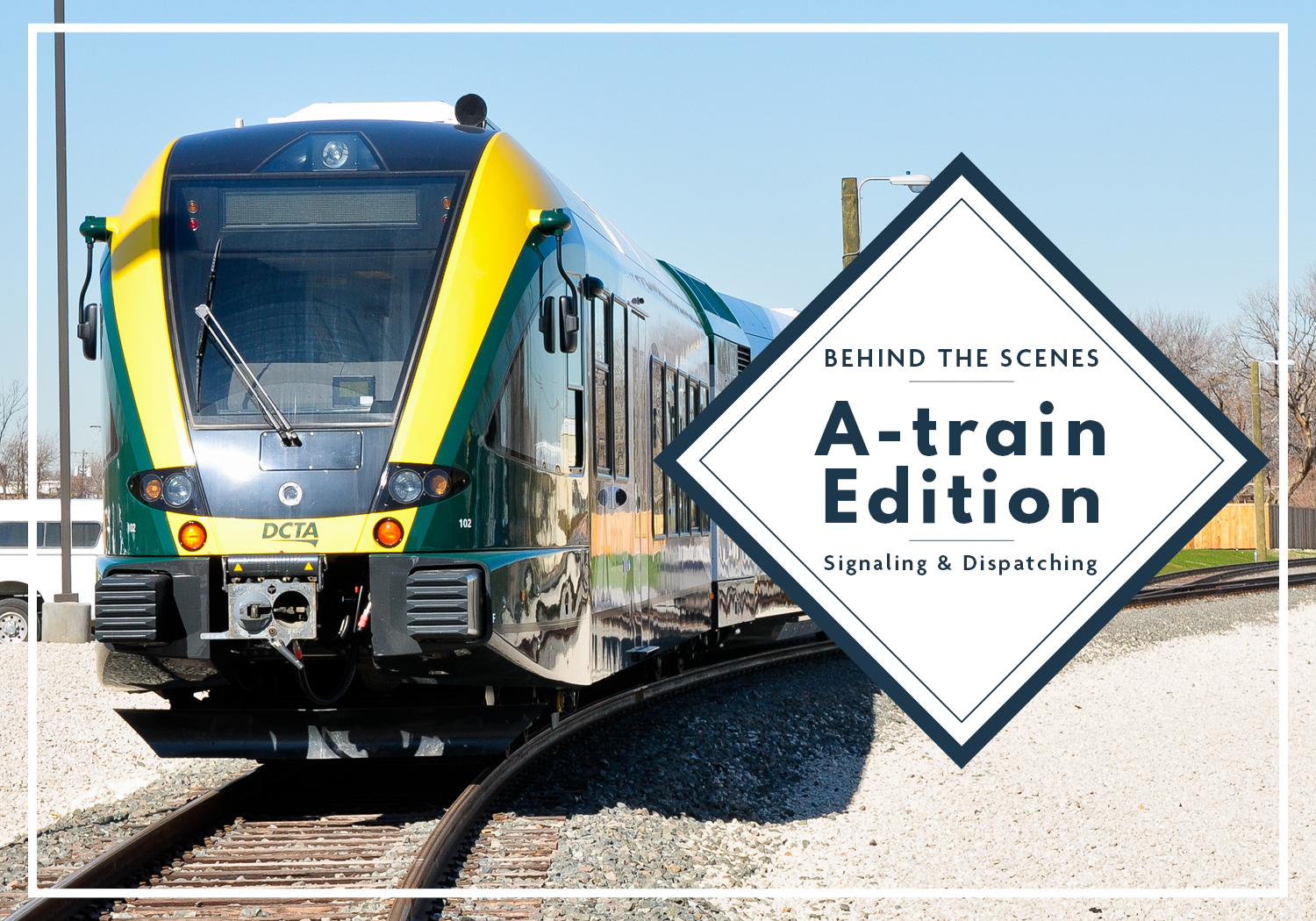
If you’ve ever taken a ride on our A-train you’ve probably seen the red and green signal lights as you pass by. Have you ever wondered what they mean? Or how the train operators communicate with the other train on the line? We’re taking you behind the scenes to show you how the A-train signaling and dispatching work!
So, what does signaling and dispatching even mean? They go hand in hand when it comes to making trains run safely! Signaling is a system used to direct railway traffic and keep trains clear of each other. The signals are those red, green and yellow lights you may see on the side of the rail line as you ride our A-train. The color and pattern of the lights determine what the operator does when they approach the signal, similar to when you approach a stoplight.
Dispatching is the human behind the signaling. They are in communication with the trains on the line and operate the signals the train operator sees. The dispatcher can easily radio a train operator to give updates on the status of another train if they need to stop or to explain why they were stopped.
The scoop on signalling
Signaling has three aspects that may sounds familiar to you. It uses red, green and yellow lights and different light positions to indicate what the operator does next.
Green means “go at authorized maximum speed.” The speed limit varies depending on where the train is on the track. Some sections of the track will have a lower speed limit due to restrictions imposed by permanent features like curves and bridges or any maintenance activities that require the train to slow down.
Yellow means “slow down.” The train may need to slow down to meet the upcoming lower speed limit, to handle an upcoming curve or to prepare to come to a stop at the next signal.
And of course, red means “stop.” A train may have to stop on the track to wait for the double-track system to change, let another train pass or wait for any issue on the track to be resolved before proceeding.

Want to read another behind the scenes blog? Check out our behind the scenes interview with a bus operator!
The scoop on dispatching
Our dispatch is operated mainly out of Fort Worth, but there is a backup dispatch location at our Rail Operations and Maintenance facility in Lewisville should it be needed due to an emergency. The dispatcher operates the signaling and manages the locations of each train on the track to make sure everything is safe. They can remotely control the routes the trains take by diverting trains from one track to another by operating a switch machine using a dedicated communication link. The signaling system communicates with the dispatcher so they know exactly what is happening in the field in the event of a malfunction. The system is designed to be failsafe, and if there is a failure of any kind the signals will always tumble down to the red aspect. The dispatcher can manually change a signal to red if needed and can communicate with the train crew through a radio communication channel.
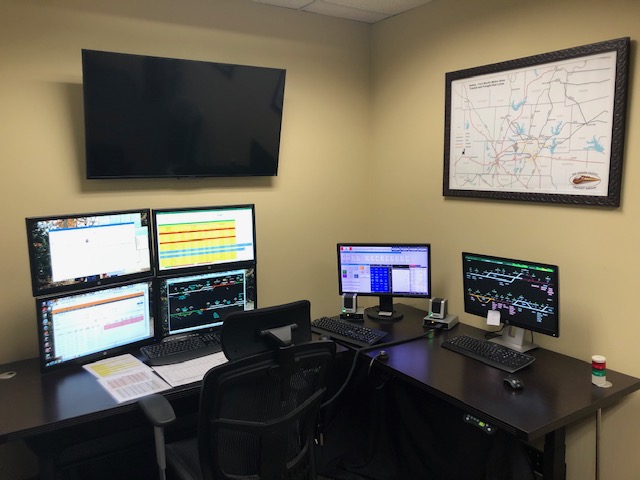
The scoop on Positive Train Control (PTC)
Positive Train Control (PTC) is a safety system required for all commuter rail lines in the United States by the Federal Railroad Administration (FRA). PTC was designed to prevent collisions and other incidents by automatically detecting and controlling the movement of trains in the event of human error.
The PTC system is programmed to know where the speed restrictions are in the track and can stop excess speeding if the train operator does not slow down after the desired speed display is given. If a train operator ignores the red “stop” signal, the system automatically kicks in and applies the brakes. If the train operator is speeding above the authorized maximum speed, the PTC system will give a warning to slow down and will apply brakes if the speeding continues.
DCTA finished testing its PTC technology by the FRA deadline and is currently operating with PTC turned on during regularly scheduled A-train service. We are the first in Texas to implement PTC on an entire commuter rail system! Learn more about our PTC system on our webpage and check out what CBS 11 had to say about it here.
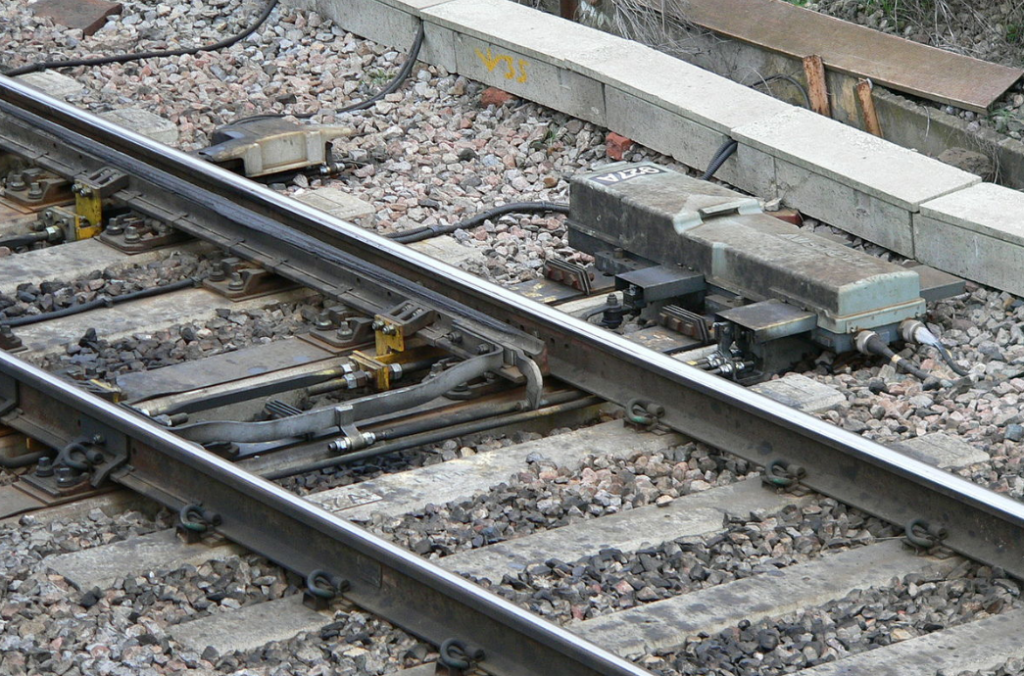
The scoop on DCTA’s train track
While our A-train runs during the day, a freight train runs on our track at night. DCTA owns the track and contracts our line out to the freight company which allows them to use our track. While DCTA owns the track itself, Dallas Area Rapid Transit (DART) owns the land the track is on, which means we contract with DART to use the land. Transportation agencies, whether public transit or freight, often work together across the county and contract services so passengers and goods can get where they need to go.
Have you ever wondered the difference between DART and DCTA? Check out our blog from the archives to learn more!
I hope this gave you good insight into how our A-train operates! Do you have a behind the scenes blog you think we should feature? Let us know in the comment section below!
More News to Use
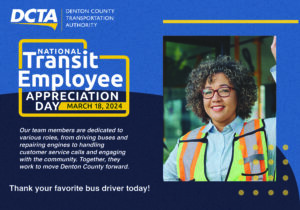
Happy National Transit Employee Appreciation Day!
March 18, 2024
Join Denton County Transportation Authority in celebrating National Transit Employee Appreciate Day, March 18, 2024! Every year, DCTA celebrates bus and rail operators for their endless dedication and commitment to serving Denton County. This year, we are extending.

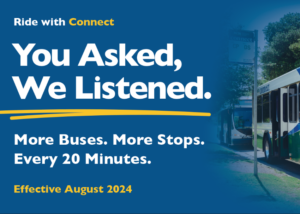
Upgrades coming August 19th – More Buses. More Stops. Every 20 minutes.
August 30, 2024
Upgrades coming August 19th will provide even more convenience for those taking the Connect Bus—all with the same excellent customer service you’re used to. If you are using our GoZone services between 7 AM and 9 PM, and.

Sign up for Updates
"*" indicates required fields










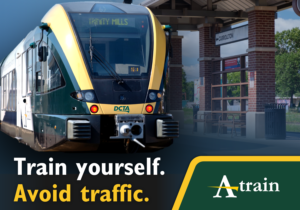

 Follow us on Twitter
Follow us on Twitter